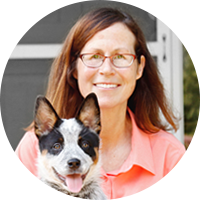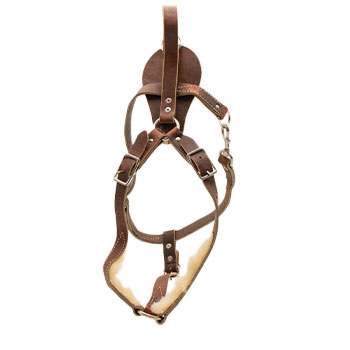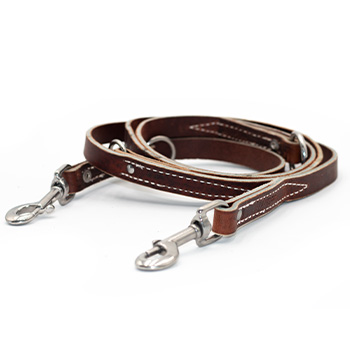May 19, 2011
I have a question about a local police instructor who wants to wash a dog with nice drive because its getting too far off the track. This instructor is a foot step tracking instructor.
Full Question:
Ed,Great web site. I'm a police K-9 handler/supervisor for a medium sized Sheriff's Office. Question in reading your TTD Q&A, and watching your Tracking I & II videos I have learned loads on tracking. Recently, I had a differing opinion with another K-9 trainer regarding training a new dog in tracking. This trainer was very concerned about the 'amount' of 'quartering' (straying from the footstep track) the dog was doing. He was having the new handler post when the dog wandered a couple feet from the track. The dog was getting very frustrated and would simply come off the track and look at the handler. The trainer wanted to flush the dog for this. So I had the handler bring the dog out and I basically told the handler to let the dog go with the instruction that if he was 15-20 feet (lead length) from the track, post until he came back, give him an 'atta boy' and continue. The dog did great, sprinting the track with nose down and not coming off. I feel I'm right on this, but am I encouraging a sloppy dog or simply letting him work? The other trainer wanted 'footstep to footstep' tracking, which I do not believe is necessarily what we as police K-9 handlers want as there is a lot of compulsion associated with it.
I need to watch the videos again, I know.
Thanks,
Bailey

 Ed's Answer:
Ed's Answer:
Nice to hear from you. Your question is very good because it relates to so many officers that don’t really know how to train tracking dogs properly.
Your other instructor is 100% wrong. He is wrong on not allowing the dog to make a mistake and he is wrong on foot step tracking (FST).
The key to training a tracking dog is to allow it to make mistakes and then work his way through them. This is how a dog learns.
The people who propose FST have been trained by dog vendors who sell Schutzhund dogs. I am a huge fan of Schutzhund. I love the sport. But the key word here is that it is a sport.
The goal of police tracking is to find the suspect. I don’t care if a dog goes 3 feet of the track or 50 feet off the track as long as the dog is still working the scent of the track. The mistake that many trainers make is that they fail to learn the technique of allowing their dog to make a mistake and then allowing or helping them work out the mistake and problems. In fact – that’s how learning takes place. We want a dog that works out problems. We want a dog that fights for the end of the track. We want a dog that does not quit but keeps looking and searching.
The key to training a sport tracking dog is to train a dog to learn obedience on the track. A sport track is a very slow methodical step by step track. This is not a natural process. This is not how an off leash dog would naturally work a track. The key for police tracking dogs or S&R dogs is to allow the dog to fight for the track and find the end.
What I think trainers should occasionally do is to cut a dog loose. Let him work a track when he drags the leash.
If a dog has good drive he will learn from his mistakes. If a dog has good drive and is constantly stopped by the handler he will get frustrates and learn nothing. In effect he learns to quit when he faces a problem.
I don’t think the other trainer is a bad trainer. What would make him a bad trainer is to have a closed mind to new ideas.
Your other instructor is 100% wrong. He is wrong on not allowing the dog to make a mistake and he is wrong on foot step tracking (FST).
The key to training a tracking dog is to allow it to make mistakes and then work his way through them. This is how a dog learns.
The people who propose FST have been trained by dog vendors who sell Schutzhund dogs. I am a huge fan of Schutzhund. I love the sport. But the key word here is that it is a sport.
The goal of police tracking is to find the suspect. I don’t care if a dog goes 3 feet of the track or 50 feet off the track as long as the dog is still working the scent of the track. The mistake that many trainers make is that they fail to learn the technique of allowing their dog to make a mistake and then allowing or helping them work out the mistake and problems. In fact – that’s how learning takes place. We want a dog that works out problems. We want a dog that fights for the end of the track. We want a dog that does not quit but keeps looking and searching.
The key to training a sport tracking dog is to train a dog to learn obedience on the track. A sport track is a very slow methodical step by step track. This is not a natural process. This is not how an off leash dog would naturally work a track. The key for police tracking dogs or S&R dogs is to allow the dog to fight for the track and find the end.
What I think trainers should occasionally do is to cut a dog loose. Let him work a track when he drags the leash.
If a dog has good drive he will learn from his mistakes. If a dog has good drive and is constantly stopped by the handler he will get frustrates and learn nothing. In effect he learns to quit when he faces a problem.
I don’t think the other trainer is a bad trainer. What would make him a bad trainer is to have a closed mind to new ideas.
100% (10 out of 10)
respondents found this answer helpful


Can't find what you're looking for?




